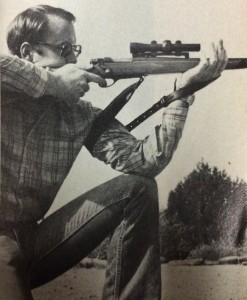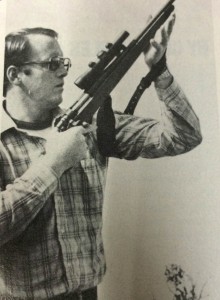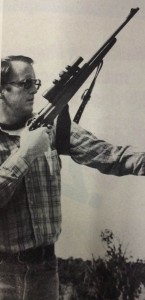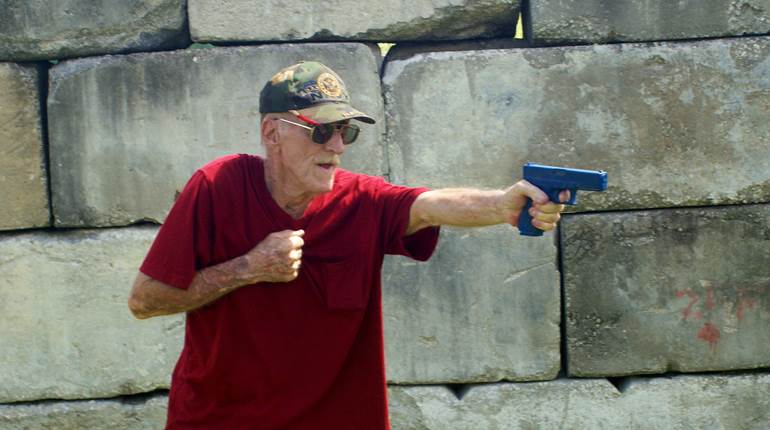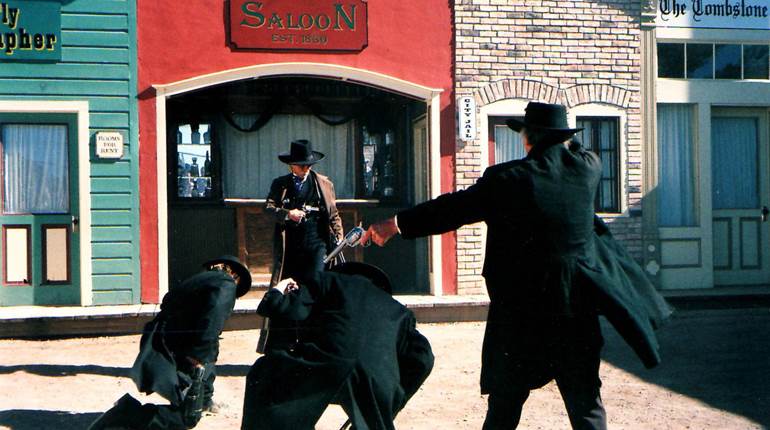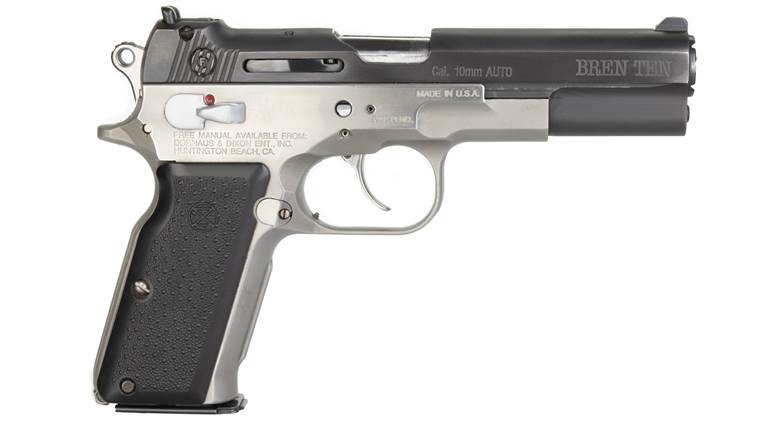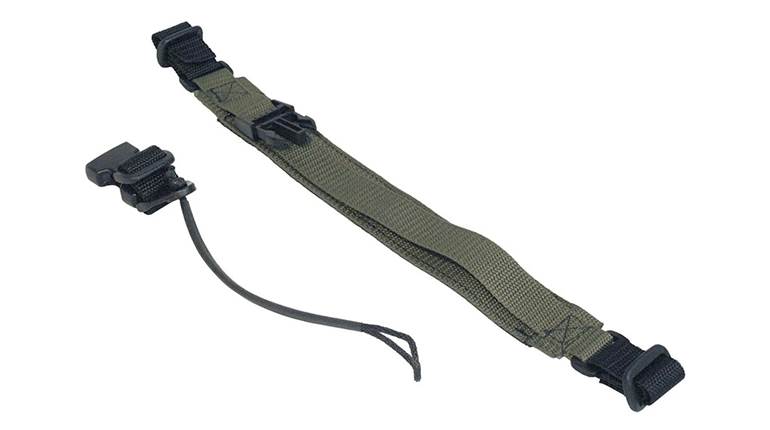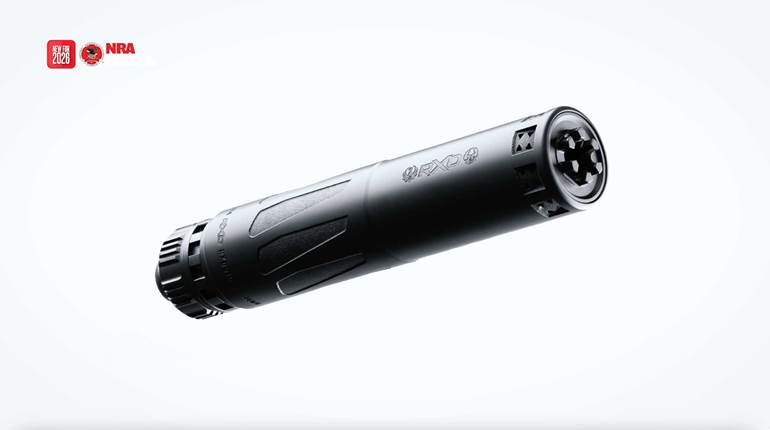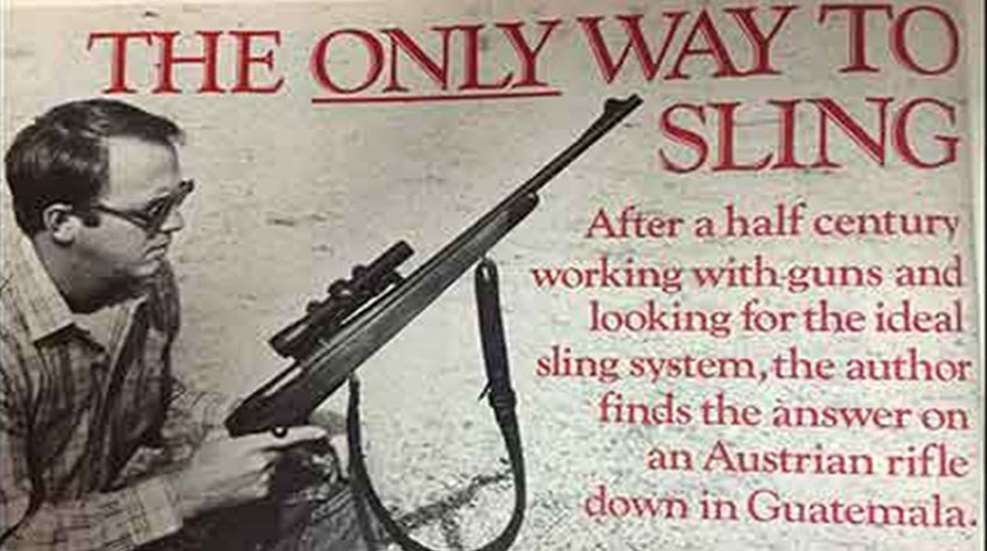
When the renowned John Paul*, his ship afire and sinking, was called upon to surrender, he is said to have shouted back, "I have not begun to fight!" Whereupon a marine was heard to mutter, "There's always some clothpate as never gets the word."
*Aha! You thought I was going to say "Jones," didn't you? The fact is that John Paul had no last name until he picked "Jones" out of the air when on the lam for a murder-two charge. As John Paul Jones he is logged in U.S. history, but actually that is an alias.
Well, so it seems. Since "nineteen-ought-thirty-four" I have been shooting rifles for fun and profit, but not until nineteen-eighty-four did I get the word about sling systems. There was the military loop sling, there was the "hasty" sling, and there was the carrying strap. The loop gave support, but it was slow to get into. The hasty did nothing for shooting except get the leather out of the way. The carrying strap was just that—not an aid to marksmanship. We all worked hard on a quick loop-up, but a lock time of five seconds seemed about all we could count on. There had to be a better way.
Most postwar riflemen just gave up. "Nobody shoots with a sling anymore." Cobra straps and bipods appeared, trending in opposite directions. The target shooters had plenty of time so they saw nothing wrong with the conventional military loop, and the hunters—no longer trained on the '03 and the Ml—just ignored the whole subject. The advantages of the shooting sling began to fade into the realm of the arcane.
Let us consider the function of the shooting sling, and see whether or not we really do need it. Properly used, the shooting sling binds the rifle to the upper body in such a way that, if the supporting elbow is rested on something solid (like the ground or the knee), the piece is held firmly in the horizontal plane by bone and leather rather than by muscle. In any firing position in which the elbow is supported, the shooter can "go dead"—relaxing all muscles—and the sights will not sag off target. This is accomplished by tying the rifle to the supporting hand and to the upper arm simultaneously, so that the angle of the elbow is positively locked by the strap between the two. The higher the loop is on the arm, the more positive is the lock.
Using the systems taught in the marksmanship schools (at least those marksmanship schools we know about), and using slings as conventionally attached, the loop must encircle the upper arm, and be firmly tightened in place, if it is to render proper support. The loop must pull forward to the front attachment, and any connection with the "butt swivel" is irrelevant. Target slings, or "shooting cuffs," have no such connection, but they do not serve to carry the rifle.
A proper sling, however, must be both a shooting aid and a means of carrying the rifle. A carrying strap does one job, and a shooting cuff does another. What we need is a device that does both, and which can be used instantly.
Or do we? Many do not think we do, maintaining that field shooting needs no artificial gadgetry. The point may be moot, but I do not think so. The shooter of running rabbits, the brush-country deer hunter, or the African pro who only shoots to stop charges may not need a sling. Anyone who shoots only from standing positions does not. But the generalized rifleman does. No one man's experience may be taken as definitive, but I have shot for a long time, and under various conditions, and my guess is that the loop sling was used seven times in 10. It has always been used when there was time, but it takes five seconds to put on, and that is not always available. It increases "hitability"—the probability of a first-shot hit, under stress, from an elbow-supported position—by about 30%. That is important.
The Olympians play the biathlon game, which had a certain practicality before it slid down to the .22 rimfire level. (Slingshots next?) In the biathlon one skis from firing point to firing point. He needs a sling both for carrying and for shooting. I checked this out and was informed that a "biathlete" can loop up in one to 11/2 seconds. Good show! The catch is that the biathlete wears his cuff on his arm, as part of his shooting jacket, and simply snaps a hook on his sling into a waiting D-ring on the cuff. A rifleman cannot go through life with a D-ring laced to his biceps. No solution here.
At the First Scout Conference, held last year at Gunsite Ranch in Arizona, this matter was considered in depth. The Burroughs loop was demonstrated with good response, but lock time was still about three seconds. John Pepper came up with a well-designed metal hook for a web strap that was also quicker than the military loop, but still not in the one-second bracket. Frustration!
Then, at the home of Carlos Widmann in Guatemala, the lights came on. He showed me his Mannlicher SSG, on which a conventional QD stud had been fitted as an extension of the forward floorplate screw. What for?
"An old British system," he explained detaching the sling from the butt swivel and refastening it to the floorplate stud. "You use it thus." Arm through, around, and in—just as in "hasty." But, unlike in hasty, there is now positive load on the upper arm, pulling forward on both studs.
Why didn't I know that? Why wasn't I told? Why aren't all rifles fitted this way? Where have we all been!
Immediately some thoughts occurred. The system does not need loops and keepers. A single strap will do. A cobra strap, reversed, is ideal, if given a half-twist forward to keep the leather smooth against wrist and forearm.
And Pachmayr flush sockets complete the improved assembly. These do not project and can be hooked up instantaneously. (Don't leave home without them!) Three sockets should be installed; forward, aft, and intermediate.
Since the sling is first a shooting aid, and only secondarily a means of carrying the piece, the normal attachment is to the two forward sockets. The rifle may be carried quite comfortably this way, either right-side, muzzle-up (American) or left-side, muzzle-down (African), as long as one hand is free to steady it. If violent exercise is expected, or if both hands must be free to climb or manage a bike, the front hook is snapped into the butt socket and the intermediate into the forward. Three seconds. Now the piece may be slung cavalry style, diagonally across the back.
As soon as I got back to Gunsite an intermediate Pachmayr socket was plugged into Fireplug H—a Remington 660 in .350 Rem. Mag., with a Leupold M8-2X in B-Square's forward mount. We rushed off to the Vlei, our largest rifle reaction range, and checked the combination out. As expected, it worked like a charm. We particularly noted how much better than a loop it is in the "spider walk" when topping a low ridge.
This system is truly a "great leap forward." I have been in need of it for a lifetime. It has been there all along, but I, like John Paul, didn't get the word. But neither did anybody else I knew, so at least there was plenty of company in ignorance.
I showed the photos to Creighton Audette, a fellow NRA director and an old-time big-bore rifleman. He said "Yes. That's the; old British 'two-point' system. They used it back before the turn of the century."
O.K.So nothing is new under the sun. But excellent wisdom is often lost with time; witness the techniques of Lizst and Paganini. The fact remains, however, that this sling system, which I have named the "CW," after its rediscoverer, is the answer to a long-sought goal—positive sling support in one second. All serious riflemen will fit it to all serious rifles from this day forward.
